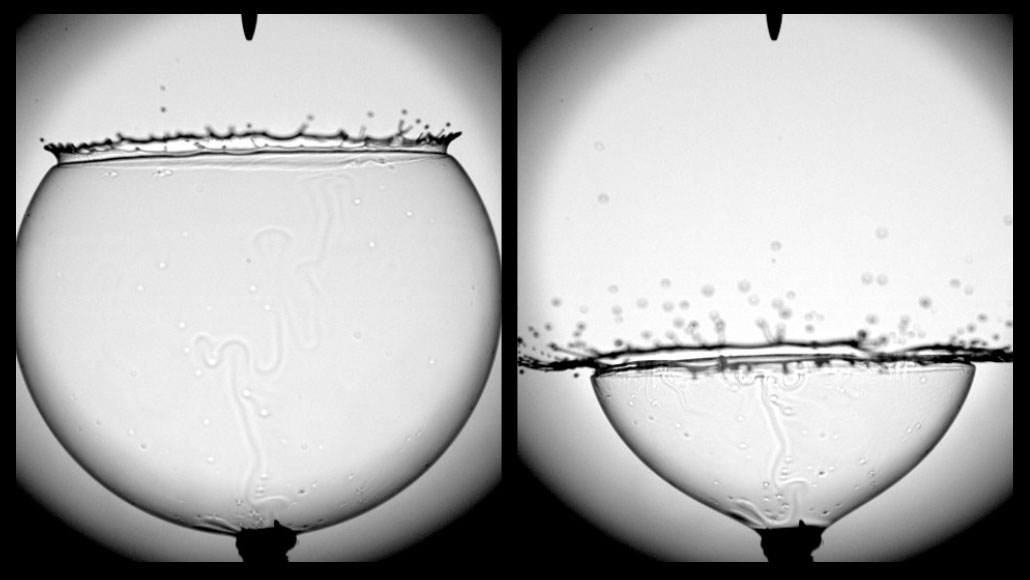
The sound of a bubble’s pop can reveal the forces that occur during the burst, via an acoustic technique that can be used alongside high-speed imagery (shown).
A. Bussonnière/Institut d'Alembert, Sorbonne Université, CNRS

The sound of a bubble’s pop can reveal the forces that occur during the burst, via an acoustic technique that can be used alongside high-speed imagery (shown).
A. Bussonnière/Institut d'Alembert, Sorbonne Université, CNRS